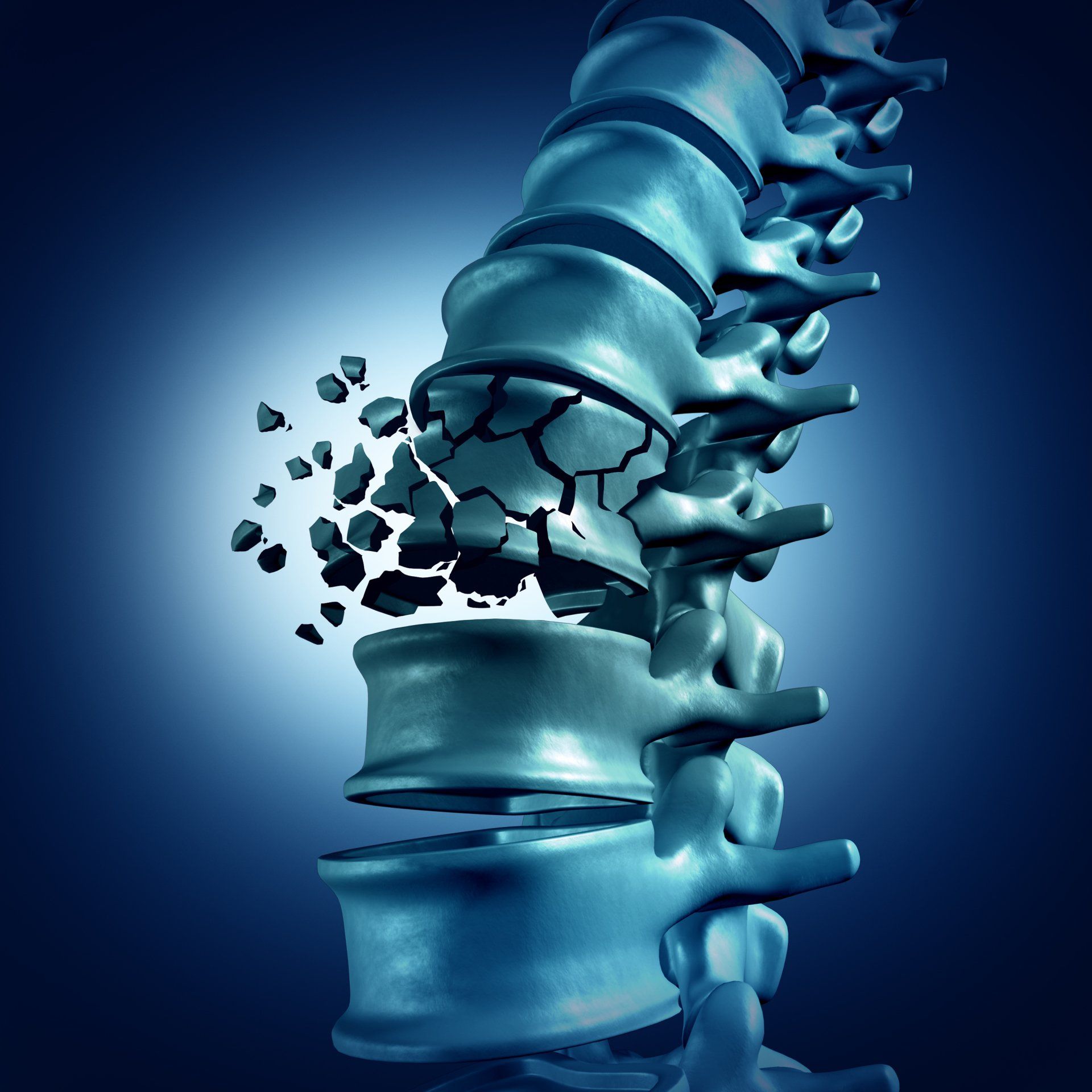Spinal Fractures
700,000 vertebral compression fractures occur in US each year.
2/3 go undiagnosed, even fewer treated.
1 in 2 women & 1 in 4 men
over the age of 50 will have an osteoporosis-related fracture
in his/her lifetime.
over the age of 50 will have an osteoporosis-related fracture
in his/her lifetime.
We understand how the pain can severely affect your everyday activities; therefore, we can usually see you in consultation and treat your fracture within days of your calling our office.
Traditional treatment for spinal fracture has been bed rest with pain medication. However, medical advances now offer a proven, minimally invasive procedure that can repair the fracture, relieve the pain, and allow you to resume your normal activities
This minimally invasive procedure is called balloon kyphoplasty.
Our physicians (VIRA) have performed thousands of these kyphoplasty procedures over the last decade with excellent results.
The procedure is performed under conscious sedation (twilight sleep) or general anesthesia, so you do not experience pain during the procedure.
The procedure is performed under conscious sedation (twilight sleep) or general anesthesia, so you do not experience pain during the procedure.
If you or your doctor thinks you may have a spine fracture causing your pain, we will be happy to schedule a prompt appointment in our office to determine the cause of your pain and if the kyphoplasty procedure is appropriate for you.

There are 33 square or box-shaped bones in your spinal column which enable you to stand upright and protect your spinal cord.
- Each bone or segment is referred to as a vertebra.
- There are 7 vertebra in the cervical region or neck, 12 in the mid back or thoracic region, 5 in the lower back or lumbar area, and 9 in the sacrum/coccyx or tailbone.
- Behind these vertebrae, additional bone extends out to form a ring (like a napkin ring) that encircles and protects your spinal cord.
- Between each segment or vertebra is a disc that is a tough rubbery tissue that cushions the vertebra and allows movement of your spine.
When your bones are healthy, it takes considerable force to break them.
However, certain conditions such as
osteoporosis
with aging, cancer, and long-term use of steroids can make the bones in your spine more fragile and more likely to break or fracture.

Balloon kyphoplasty
is a minimally invasive procedure used to repair spine or vertebral compression fractures caused by osteoporosis and cancer. Before the kyphoplasty procedure, we will meet with you and examine you, as well as review appropriate tests to determine if the procedure is appropriate for you.
Balloon kyphoplasty can be performed under local (conscious sedation) or general anesthesia, whichever is appropriate for you. It can be done as an inpatient or outpatient. The procedure is performed using special x-ray guidance with placement of two needles or cannulas into the vertebral body through tiny incisions in the back. Through these hollow needles, orthopedic balloons are inserted and inflated in the bone. This helps restore the height and correct the deformity and also produces a cavity for injection of medical-grade cement which acts to stabilize the fracture. Most patients report almost immediate relief of pain which improves over the next several weeks.
As with any procedure or surgery, there are some associated risks, although these are minimal in qualified hands. We will discuss these with you at the time of your appointment.
Watch a procedure here.




